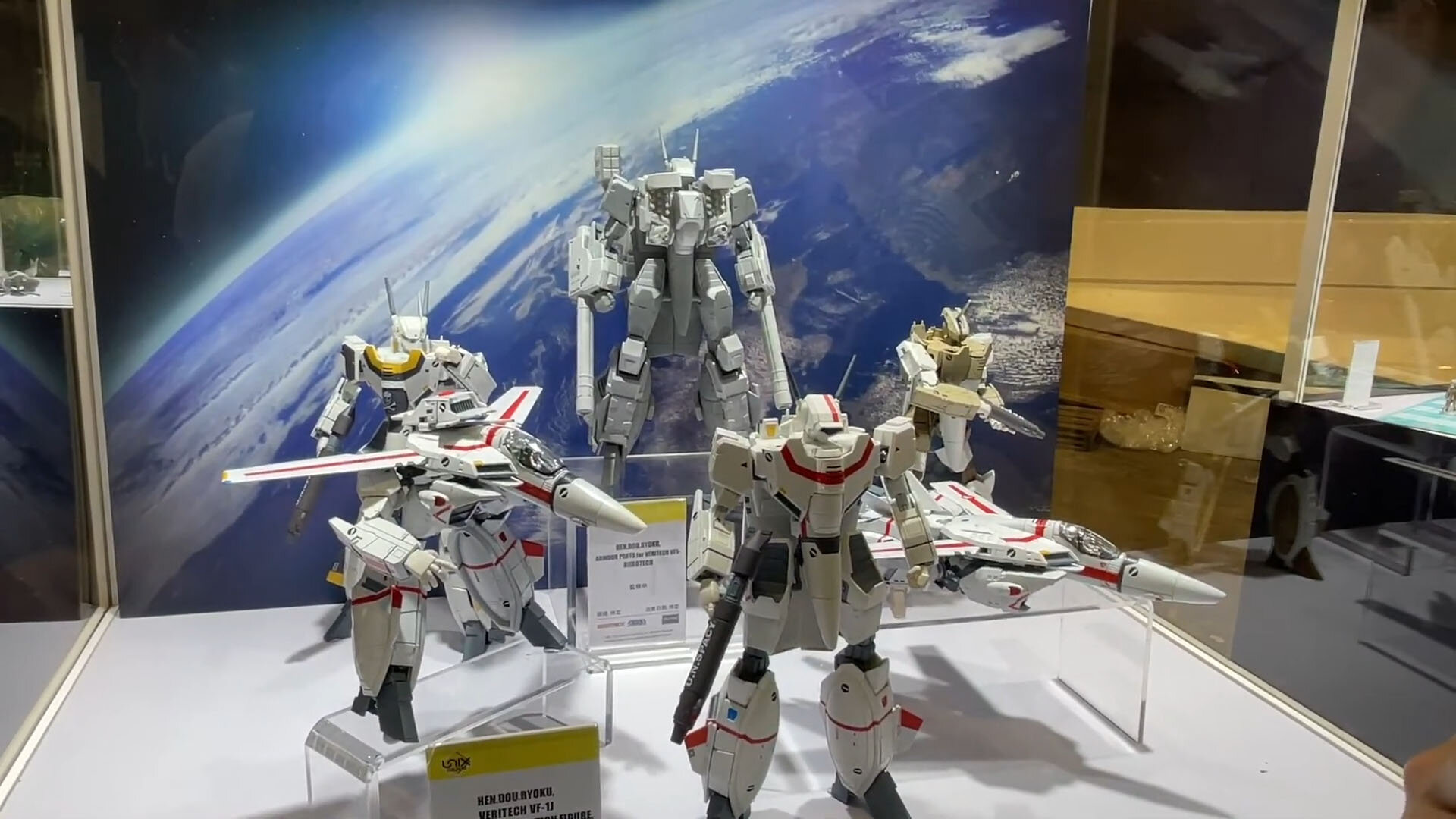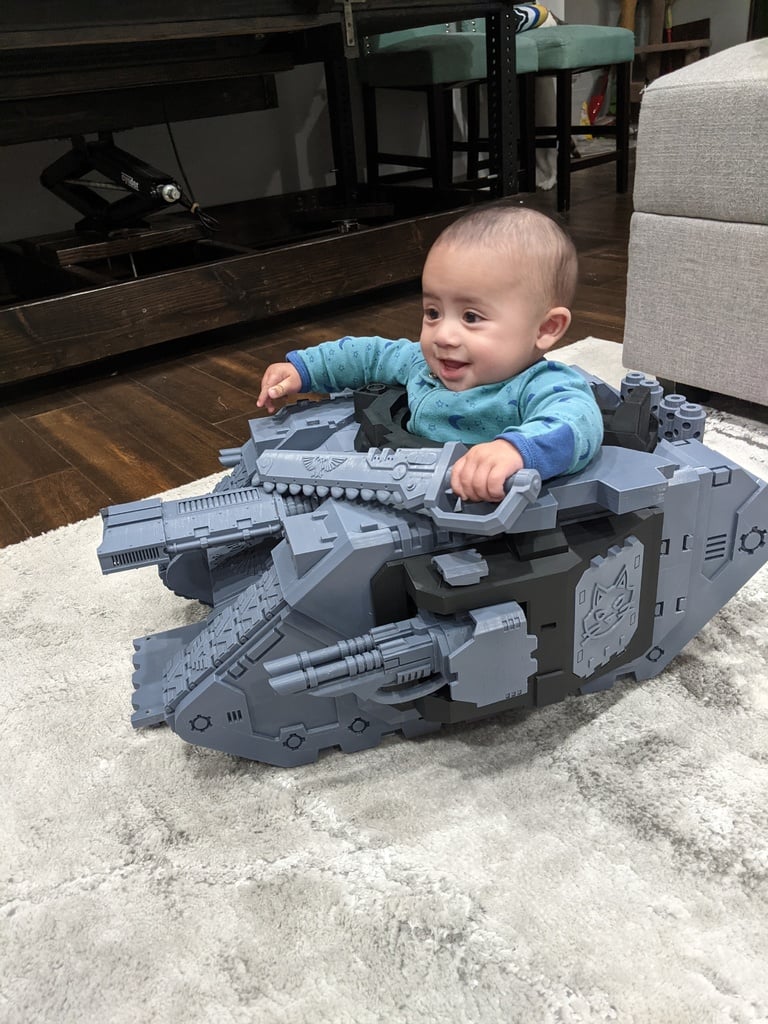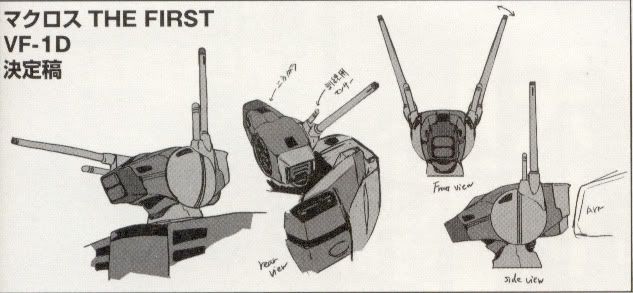-
Posts
5317 -
Joined
-
Last visited
Content Type
Profiles
Forums
Events
Gallery
Posts posted by Knight26
-
-
2 hours ago, electric indigo said:
Are the pylons pointing outwards?
Yes, always have, it is just more obvious with larger weapons.
With those on it handles like a pig however, figure they are just shy of 2000lbs each. -
(hopefully) Maybe they are dragging their feet on the US release in order to "influrnce" HG into allowing SDF and DYRL. Mind you, big D could probably buy HG outright if they wanted to for less then they spent on their last movie flop.
-
So, Canada has Macross now, when do we get it on US D+?
-
That silhouette is just odd. The lines are pretty clean, and I can see some of the VF-19 in it, but I also smell too much transformersism in it.
-
With 10 episodes, they could have made the side missions and that other thing work better (though I agree it was unnessecary); tie them back into the main story. The final "villian" reveal was out of left field. As for the ending, it fit , but needed to be done better.
-
My favorite part is still when Deadpool rips on the multiverse. That line hit home with me hard.
-
Caught the last season, anti-climactic ending for sure (which honestly fit the series). And, I echo @Mog's comments. It felt rushed. The earlier seasons were 10 episodes, which gave plenty of time for character development and making side-stories that actually flowed.
-
I will applaud the choice of song, and it looks like will have some decent action at least.
-
I am looking to rehome the following Valkyries from my collection, I need to downsize for an upcoming move. All prices are plus shipping; Continental US is preferred.
Unless otherwise noted (the VF-27) all are complete in excellent condition with no damage and were kept in a smoke and pet free home.
Additional pictures available upon request. All units are also listed on FB Marketplace. Can also meet up in southern AZ.
Bandai VF-27 (1st Edition) $100
Nose has broken off but is still included, missing manuals.
Bandai VF-29B (Percival) $200

Bandai VF-25 Worldwide Macross Edition $200

Bandai VF-31F $250

Yamato/Arcadia Sv-51 Nora $250

Arcadia VF-0D $400
Yamato VF-22S Gamlin $300

Yamato VF-11B $500

Riobot Mospeda AFC-01H Legioss $250

-
Tried connecting to D+ on my VPN and kept getting an error, ugh (NordVPN)
-
Dang that looks awesome
-
On 10/6/2021 at 11:12 AM, jvmacross said:
Well minivalks (can't remember his username here) aka Michael Ryan, did create some MTF heads for his 3D printable valks.
https://cults3d.com/en/3d-model/art/vf-1-valkyrie-battroid-mode-incl-fast-packs -
I liked Tig's character when she first came on, but stopped watching shortly thereafter. But yes, I don't know many Trek fans who like disco, so I doubt that it will do well. Love SNW and Lower Decks though.
-
Based on this pic:

That fighter mode looks like it was already destroyed. Hard Pass.
The most interesting thing is that Tomahawk based armored Valk. Was that is Macross the First? -
I do not care for it. The proportions are super off and the knee joint is just tiny, how the heck would the intake air pass through there? The proportions in fighter mode are going to be horrendous.
-
58 minutes ago, kajnrig said:
Oh wow, that is a funky-looking design, not at all what I expected. I thought it would basically just make the bottom exhaust look like the top so you'd have this like three-pronged tail end sticking out the back with the exhaust nozzles seeming to be set into the airframe.
So the one of the left is the Production F-23A concept. It would not have had thrust vectoring, focusing more on stealth and speed (YF-23-2 was so slick and fast nothing could catch it, not even the chase F-15). A thrust vectoring F-23B(?) was discussed at NG but never made it far because they lost the ATF Competition. The NATF concept is on the right, and had a couple of iterations, that is the first one, with canards (super sexy) and thrust vectoring. The later iterations ditched the canards but were externally pretty similar.
Thrust Vectoring was never a requirement for the ATF Competition. But, LM put a lot of research and development into it so incorporated that into the (Y)F-22 because they wanted to give it more agility. ANd it added an extra wow factor at the competition. -
1 hour ago, kajnrig said:
I remember hearing in a random video or magazine article or something that in response to a late ATF requirement, McDonnell drafted up designs for a thrust vectoring YF-23. Anyone know if this is the case and/or if it ever made it to any form of visual representation? Getting a model or a Ace Combat mod based on even prototype artwork would be cool to see.
In short, sort of. The original ATF requirement called for thrust reversers and that was pulled late on, so the YF-22 never had them, but the first YF-23 did. The second one did not, and because of the lost weight could outrun pretty much everything else. A thrust vectoring F-23A and NATF were drawn up and proposed during and after the competition.
-

Probably a better question to ask in the workshop or modelling forums.
-
Warhammer fans have kids? LOL JK

Very cool build though.
-
On 6/3/2024 at 11:55 AM, Jasonc said:
Sorry for the delay in this, but this isn't the news I was hoping to share. In designing this, there was a part that had an issue that was unclearable. As I tried rolling it back to fix it, it lead to there being a roll back of everything to the very beginning. At this point, I had no choice but to scrap the work done on this. I will need to start from scratch. It's not the worst thing, as there were issues I wanted to correct, but it was a lot of work. At least on the bright side, I have a better know how of some of the complex parts, and being that I now have a plan of attack on this that will give me a better layout, I should be able to make this better, and incorporate some other features I wasn't planning with the first version.
I guess the things that suck can be a point to fix things, as normally should be the case. As I am getting the new 3D printer that can print production and working type materials, I plan to incorporate these into the tests as I move forward, so I can test not only fitting, but materials under certain stresses that the figure will have. I have 3 materials that can basically make this a workable toy, and dyes for the resin that can give them the color it needs to hopefully require little to no paint for this.
No worries, these things happen. What was the issue that couldn't be cleared? If you don't mind me asking.
-
Amazing engineering brother.
-
Well, the redesign of the YF/VF-19 and YF-21/VF-22 have real-world examples. The YF-22, YF-23, X-32, and X-35 were technology demonstrators and were never meant to be representative of the final production aircraft. The YF-22 is actually a good example since we did lose one during testing due to Pilot Induced Oscillation (PIO), which is a major concern in any fly-by-wire aircraft. I even worked on the Flight Test Program where the goal was to limit PIO as much as possible.
Now, we do not know why the YF-19 prototypes crashed; it could have been for any number of reasons. But consider this: the YF-19 had one the most complicated transformations to date at the time (In the real world, yes, the SV-51, VF-9, and other advanced Valkyrie designs had some pretty origami transformations). So, the crashes could very well have been a result of that locking up or the pilots initiating them at too low an altitude or other PIO-like issues. The fact two pilots were killed leads me to believe that they were both aboard the first prototype when it was destroyed; perhaps one was acting as the onboard Flight Test Engineer (FTE) in the back seat. The other two point to an issue with the flight control computer not being properly attuned, which tracks with what we know about the Chief Engineer wanting to do anything and everything to prove his design was the absolute best.
Once selected, the -19 would have undergone an extensive redesign for the production version, eventually leading to the VF-19F/S/P/Kai. However, like RQ-4A Globalhawk, there was an immediate need for the VF-19A to go into Low Rate Initial Production (LRIP) to fill a gap in the UN Spacy Space Forces. These would likely have been derated in comparison to the YF-19 to make it more manageable for the average pilot, likely by adjusting the engine output, limiters, transformation mechanism, cockpit, and Tactical Operational Profile.
Maybe the Master File has a better explanation for the redesign and why the YF-19 flight test program faced so many issues, but that has always been how I looked at it. -
Wasn't the VF-5 supposed to be single seat? I know it was never officially seen, but I swear that it was written up as being a single seat VF based losely on the sea-dart. Or was that strictly fan conjecture?
-
43 minutes ago, azrael said:
☝️ Or if they really want to stay in Japan, adapt Gai-jin (which relates to Toronaga's descendant and takes place in the years leading up to the Meiji Restoration). I'm not interested it any carryover-sequel series to Shogun. Adapt another Clavell novel.
Much better idea.



Aircraft Super Thread Mk.VII
in Anime or Science Fiction
Posted
That's Vandy-1, it is a bird that flies pretty exclusively out of CHina Lake for flight test purposes. The coolest flight test bird flying.